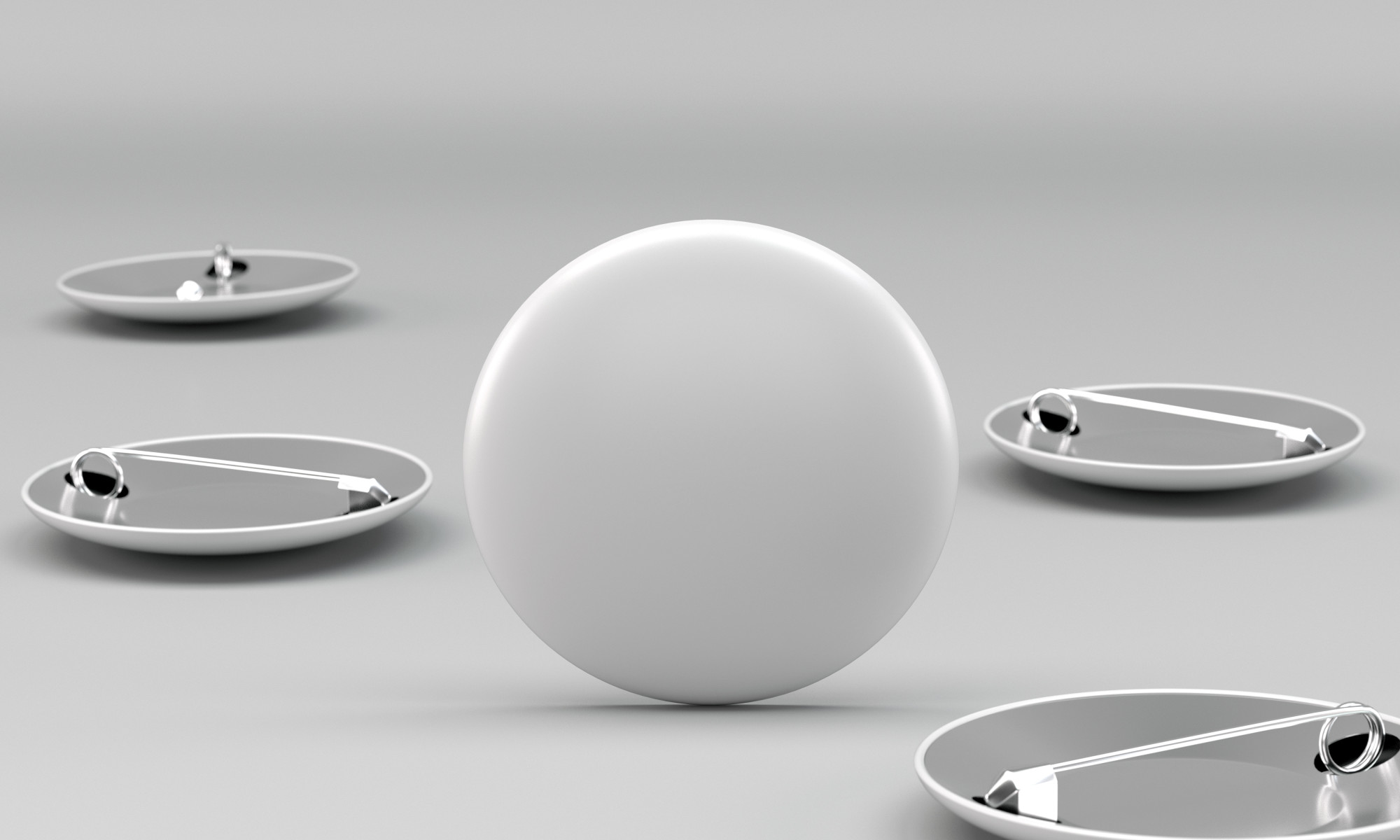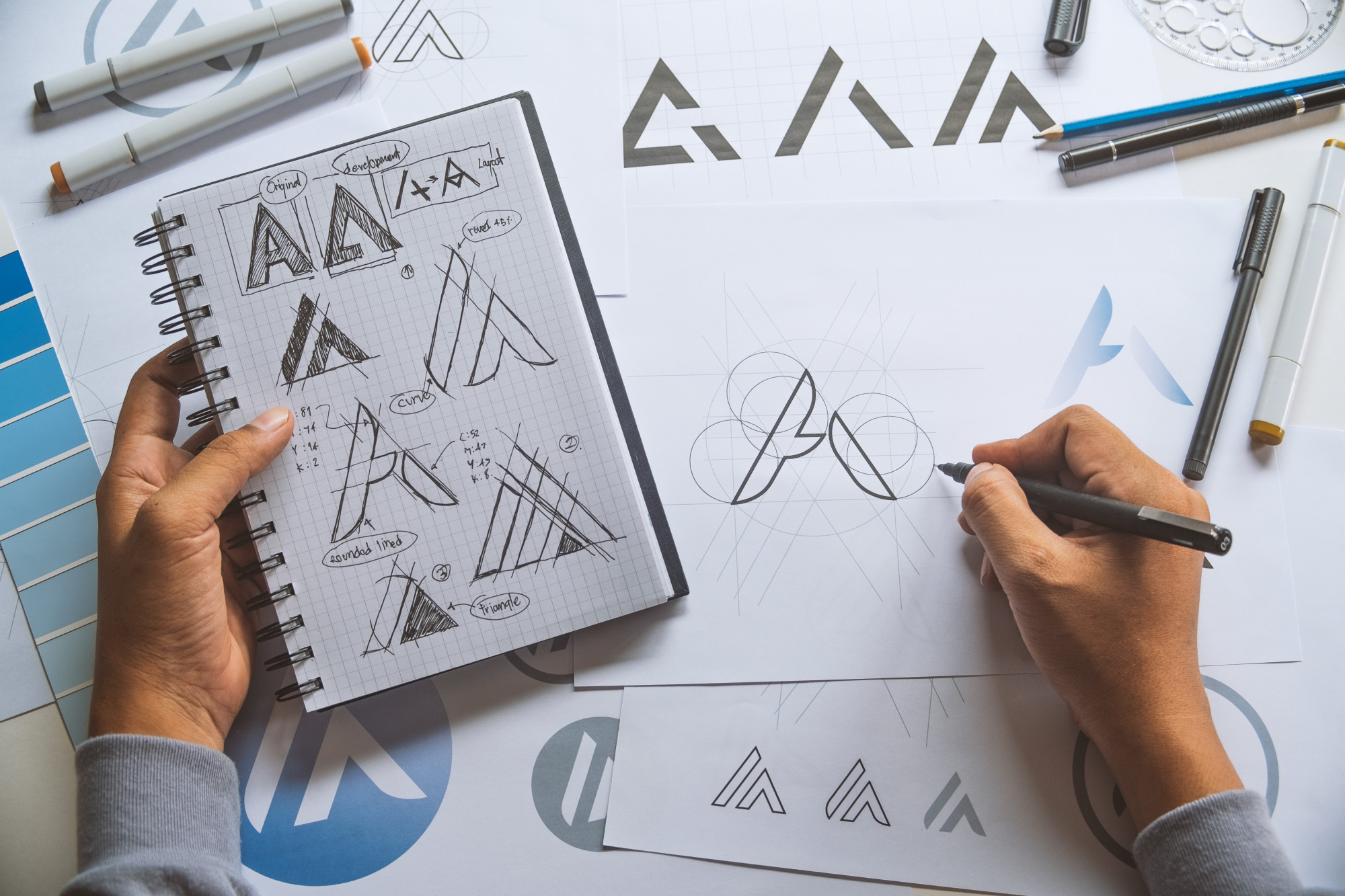Department of Defense Logos: The Secret Meaning of 3 Famous Emblems
Posted on September 08, 2019 by Logo Design Tips and Tricks

A logo stands for a lot; it’s a representation of how users identify with that brand or company.
The logo for the beer company Stella Artois is one of the oldest logos that has stuck around. The same horn that beckoned travelers in Belgium is the same horn that we recognize on Stella’s logo today.
Other companies like Twinings Tea, Shell Oil, and Levi Strauss are also some of the oldest and most famous logos which haven’t changed.
Emblems from government agencies like the Department of Defense logos have meaning and history as well. And some of the stories behind them are fascinating.
Do you want to know more about some of these secret meanings and logos? Scroll down to find out more!
1. The Air Force Seal
One of the most famous military emblems is the seal of the United States Air Force.
It wasn’t until the fall of 1947 that the first proposed emblems were drawn. And it was a conference of 30 top-ranking air force generals who considered the proposed one. But they weren’t entirely happy with the first draft.
They decided the background should be blue, rather than green. And instead of the Wright Brother’s airplane which was featured on the logo originally, the generals determined that symbolic design would be better.
In that same discussion, the artist, Mr. Arthur Dubois, picked up a pencil and flipped the design to sketch Jupiter’s thunderbolt as a proposed symbolic design.
They agreed, and the final design got approved by Truman just 2 months later.
Blue and gold, the predominant colors on the emblem, are also the colors of the Air Force and Air Corps.
The American Bald Eagle is a symbol of air striking power and the United States. The wreath incorporates the colors of the basic shield design, and the cloud formation portrays the creation of a new firmament.
The 13 stars on the Air Force seal represent the first 13 colonies of the United States, and the grouping of the 3 stars at the top depicts the 3 departments of the National Defense Establishment (Army, Air Force, and Navy).
The shield, which is divided with the nebuly line formation, represents clouds. It’s also charged with the thunderbolt, which exhibits striking power through the air.
The Department of the Air Force was established in 1947, which is what the Roman numerals beneath the shield indicate.
The eagle’s head, which turns to the right, faces the enemy. It also represents not dwelling on past deeds and looking toward the future.
2. The Department of the Army
Before they established the Army emblem, there was nothing to represent the Army. Up until that point, the seal was only used to authenticate documents and wasn’t authorized for display.
In 1974, the Secretary of the Army approved the design as the official emblem, as they realized the need to provide a symbol.
While the seal is black and white, the emblem is always displayed in color.
The seal inscription says, “War Office,” whereas the emblem description says, “Department of the Army.”
The American flag is on its own on the right side of the emblem. On the left side, the pattern of the Army was added to another flag.
They replaced the Roman numerals with the year 1775, which is the year that the Army was established.
The flags are in proper colors, and the other colors represent the ideals of the United States and the Army.
Red is indicative of courage, fortitude, and zeal.
Blue portrays vigilance, loyalty, truth, and perseverance.
White is symbolic of deeds worthy of remembrance.
Black denotes determination and constancy.
And gold represents dignity, honor, and achievement.
The Roman cuirass is a symbol of defense and strength. The sword that’s on the emblem, along with the bayonet, cannon, mortar, cannonballs, and mortar bombs are representative of Army implements.
The drumsticks and the drum are symbolic of public support and notification of the Army’s purpose and intent to serve the people of its nation.
The Cap of Liberty is supported on the point of an unsheathed sword, and it says “This We’ll Defend” on a scroll held by a rattlesnake. This represents the Army’s constant readiness to preserve and defend the United States.
3. The United States Department of Defense
The United States Department of Defense emblem shows a bald eagle with its wings displayed horizontally while grasping 3 crossing arrows.
Above the eagle is an arc of 13 stars with alternating rays. The American bald eagle has long been associated with symbolism for the United States and its military establishment.
It’s an emblem of strength and has been for a long time. The eagle defends the United States on the emblem, which is represented by the 13 pieces on a shield.
The blue chief, which joins together the 13 pieces, represents Congress.
The stars and the rays above the eagle are symbolic of glory, and the 3 arrows are collectively symbolic of the 3 parts of the Department of Defense.
Lastly, the laurel represents honors received in combat while defending peace, which is what the olive branch represents.
Symbols in emblems are exciting. If you want to learn more about the way symbols have been used throughout history, read this to understand how military challenge coins are ranked.
Department of Defense Logos Have Historical Meaning
Just like most successful logos that make their mark on history, the Department of Defense logos are symbolic and introspective in their meaning and purpose.
The goal of any company, department, or business, is to create a logo that represents the brand and stands for something powerful or significant. Changing a logo should never be done unless it’s absolutely necessary.
The longer a logo is around, the more it solidifies its representation of the powerful product or organization that it represents.
7 Benefits of Making Logo Branded Pins to Promote Your Brand
Posted on September 08, 2019 by Logo Design Tips and Tricks

Want to know one of the most effective ways to promote your brand and increase your sales over time?
Create branded merchandise on behalf of your company—and then give it away for free. One study after another has shown that companies can’t go wrong by getting free stuff into the hands of their customers.
The “free stuff” can be just about anything. From promotional pens and pencils to T-shirts and hats with your company’s name and logo on them, there is so much branded merch you can use.
But logo branded pins might be your best option. Even though they’re small, they’ll pack a big punch when you utilize them for marketing purposes.
Here are seven benefits that will come along with creating custom pins and using them to promote your business.
1. They’re Different
The key to using branded merch to your company’s advantage is coming up with promo products that other companies aren’t already using.
All of the products we just mentioned above—including pens, pencils, T-shirts, and hats—have become go-to promo items for most companies out there. It’s actually rare to see a company that doesn’t use them in some form or fashion to promote themselves.
You can use those kinds of products if you want, but you should also have a few promo products in your arsenal that make your company stand out. Logo branded pins will serve that purpose.
There aren’t too many businesses using pins at this time. That alone will differentiate your company from the crowd.
2. They’re Affordable
While you want to have promo products on hand to pass out to your customers, you don’t want to spend an arm and a leg on them. Whenever possible, you should invest in products that cost next to nothing and offer a great return on investment.
Branded pins fit into that category. Because they’re on the smaller side, they don’t cost much at all. You won’t have to worry about blowing your marketing budget on pins when you buy them.
3. They Appeal to Those of All Ages
There are some promotional products that only appeal to those of a certain age. For example, promotional planners tend to appeal to the middle-aged crowd, while promotional Frisbees tend to appeal to the younger set.
But something like branded pins will appeal to everyone all at once. Young kids, teenagers, young adults, adults, and even elderly people will appreciate getting their hands on pins.
4. They’re Collectible
If you only want to make a single branded pin featuring your company’s logo, you’re free to do it. But one way to keep people coming back to your business might be to create several branded pins for your company.
By doing this, you’ll put people in a position where they’ll want to come back to your business over and over again to continue to collect different pins from you. You have the option of creating any number of pins that you want and encouraging your customers to collect them.
People will have a lot of fun collecting your pins in the coming weeks and months.
5. They Won’t Take Up a Ton of Space
There are some promotional products that will take up too much space when you welcome them into your shop or office. Even something as straightforward as T-shirts will take up more space than you might think, especially if you order hundreds of them.
You can literally order thousands of branded pins, though, and not make a dent in your available space. Pins don’t take up a lot of room, which means that you can order as many as you want and not have to worry about them eating into your space at any point.
6. They’re Good for Any Business
It doesn’t matter what kind of business you own. You can create a pin to represent it.
Do you run a deli? You can create a pin that looks like a hoagie or a bag of chips.
Do you operate a computer repair shop? You can design a pin that looks like a computer monitor, a computer tower, or a laptop.
Do you head up a dance studio? You can put together dance pins that feature ballet slippers or something else that represents your brand.
Branded pins can benefit whatever type of business you have. They’ll get the same great reaction from your customers, no matter who they might be.
7. They Put Your Logo in the Right Light
The logo that you create for your business is one of the most important promotional tools that you have. If you’re able to market your logo right, you can build up your brand recognition and make people aware of the fact that your business exists.
You can slap your logo onto any piece of branded merch you want and get some of the recognition you’re searching for. But you could make the argument that branded pins will put your logo in the best possible light.
People will be able to touch and feel your logo when they’re holding it in pin form. This will create a stronger connection between them and your brand and give them a good feeling overall.
People will also be able to put your pin onto almost any article of clothing or accessory that they own. They can turn an ordinary T-shirt, a plain hat, or even a book bag into a promotional product for you when they stick your pin on it.
Order Branded Pins to Promote Your Business Today
Do you have logo branded pins to pass out to your customers yet? If not, you could be making a big mistake.
Consider placing an order for professional lapel pins today and start showing your logo off to the world in a whole new way. You’ll wonder why you didn’t order them sooner once you see how your customers react to them.
Find other ways to use your logo to create great branded merch by browsing around right here on our blog for more ideas.
How to Put a Logo on a Shirt: Top Design Tips
Posted on September 05, 2019 by Logo Design Tips and Tricks

A great t-shirt design can be used as a ‘free’ walking advertisement for your company. Some of the best t-shirt designs are simple logos on the right colored shirt.
What makes a great t-shirt and how do you design one?
In this article, we will go through our top design tips for how to put a logo on a shirt, so you can avoid a fashion faux pas.
How to Put a Logo on a Shirt: Our Top Design Tips
Follow our 7 top t-shirt design tips below to help you design a great shirt.
1. Sizing
This is one of the most important factors when you are deciding to put a logo onto a t-shirt.
If the logo is encompassed in a circle or square shape, you really need to choose the size wisely. Always print out different sizes and place them on a sample t-shirt to get a better idea of how the finished product will look.
Also, remember that you may have to scale the image for different sized t-shirts. The same size logo will look very different on an XS vs an XXL.
Consider the different t-shirt shapes too. Women’s t-shirts are shaped at the waist, while men’s and unisex t-shirts are straight up and down. This could affect the placement of the logo.
2. Placement
The print placement could make or break a great t-shirt design. You don’t want your logo to sit around the wearer’s waistline, nor do you want it so close to the sleeve that it can’t be seen.
There are standard placement areas and we can suggest these areas when you have finalized your design.
3. Fonts
If your design includes text, make sure it’s in a readable font and in a large enough size. Enough said.
4. Layout
If you have a complex design with different words, fonts and graphics then make sure your design is laid out correctly. The same text and graphics can look very amateur if they are laid out in a different way.
5. Quality
Any graphics or text you use in the logo should be the highest quality available. Once printed, you should check that the text is legible and the images are clear.
Always use vector file images as they scale to print, and you won’t run into any resolution issues.
6. Colors and Contrast
If you are printing the same design on different colored shirts, ensure that the design is clear on each color or create different designs for different colored shirts.
The colors should contrast each other enough to be readable. Don’t use light yellow on white, or dark grey on black, for example.
7. Borders & Edges
Printing photographs or portraits onto a t-shirt can be a great design on its own. Ensure the borders are correctly edited so just the portrait is printed, and not the surrounding background.
Keep It Simple!
Now you know how to put a logo on a shirt and incorporate good design practices for the best results.
Remember, if in doubt, keep the design simple.
For more logo design tips, check out the other articles on our blog.
Moving With the Times: 6 Modern Logo Design Trends for 2019
Posted on September 03, 2019 by Logo Design Tips and Tricks

Did you know that adding color to your logo can increase brand recognition by up to 80%? that’s because humans are naturally inclined to recognize bold colors and they will remember your business easier if you use them.
But what if you already have a logo for your business? You cannot just change it up, right? Well, you shouldn’t change it, but you can definitely update it and make it look like a modern logo.
You’re not alone if you do this. Apple has changed their logo over the years and most people still recognize the familiar bitten fruit on multiple devices such as smartphones, tablets, and laptops.
If you don’t know how to update your logo yet then keep reading this article. You’ll find great logo design inspiration to help you stand out from the crowd.
Modern Logo Design Trends to Follow in 2019
There are numerous ways you can update your logo and make it look slightly different while preserving its essence and core values. Here’s how professional logo designers do it.
1. Incorporate Gradients Into Logos
As a good rule of thumb, designers don’t really recommend incorporating gradients in logos. That’s because gradients can be hard to reproduce accurately on various devices as well as print.
If you don’t already know, a gradient represents the incremental fading of one color to another one similar to it. For example, you can start with yellow and gradually fade it until it turns into orange, creating a beautiful visual effect.
Gradients can be used in logos because they add depth and personality to your brand. You can use the colors of your brand and mix them up to create beautiful gradients. If you don’t want to use the colors of your brand, make sure that you pick ones which are close on the color wheel. This will add a sense of unity to your logo and prevent confusing your audience.
2. Go for a Vintage Look
You can also update your logo and make it look retro like a billboard from the 80s. nearly 40 years ago, designers used bold colors, badges, and cool fonts for the logos of various companies. In 2019, this trend is coming back and it provides a great way to stand up from the crowd.
For example, you can add a certain unusual visual pattern to your logo to make it look vintage. You can also choose bolder colors such as bright red, orange, purple, blue or forest green. Tweak your font to make it appear at an angle as this is what caught everyone’s attention back in the 80s.
If this seems like too much for you to handle, you should learn more on how to work with a professional logo designer who can help you achieve the look you want for your logo.
3. Opt for a Semi-Flat Logo
Especially if your business is based mostly online, you might want to go with what’s popular on the internet. Today’s logo designers agree that flat-looking logos are highly appreciated by the broad audience. In 2019, they expect people to like semi-flat logos which preserve the cleanliness of flat ones but also incorporate a bit of 3D features.
For example, a semi-flat logo has simple shapes and a few colors. It looks like someone just pressed an object against a wall and make it look completely flat. These logos are popular because they’re easy to recognize and clean. However, designers also add a simple shadow to flat logos to make them semi-flat and give them have a 3D appearance. The shadow raises the logo a bit, making it look like it’s getting out of the screen.
4. Use Text Boxes
If you’re really into simplistic and minimalist logos then adding a text box might be the right thing to do in your case. Just as the name implies, a text box incorporates a rectangular shape with a few words inside. Most designers use just one or two colors for the box border and words to keep it neat and simple.
Adding a text box doesn’t mean that you have to get rid of your current logo. You can simply add it under the current logo and mention the core values of your business such as “integrity”, “passion”, “quality”, etc. The combination of a graphic logo with a text box underneath will make it much easier for your audience to remember your brand.
5. Go for Neon Logos
A neon logo looks amazing, particularly in digital formats. It basically consists of bright colors which represent your brand and create a powerful visual statement. Neon logos were a big thing back in the 80s, so you can actually add a little bit of vintage feel to your company if you choose this option.
Best of all, it’s not that hard to convert an existing logo to its neon variant. A logo designer might help you with that and the end result can contain the actual colors of your brand. Neon logos also have simple shapes and curved lines, so they will appear simplistic and attractive to everyone.
6. Go for a Simple Picture Logo
They say that a picture can say more than a thousand words and this is true, especially when it comes to logos. Famous companies such as Apple and Instagram use a simple picture as their logo and they’re doing pretty well nowadays. Why shouldn’t you do the same?
If your business sells music equipment, you can simply have a guitar with a flat appearance as your logo. If you run a gym, a dumbbell would also be ideal as the symbol of your logo. If you run an IT business, a simple picture of an integrated circuit board might do the trick. You don’t have to add any text or shapes, the image will speak by itself.
Ready to Design Your Own Logo Now?
Whether you work with a professional designer to create a modern logo or you do it by yourself, it’s good to update it once in a while. As long as you don’t stray too far from the current version of your logo, you should be fine and your audience might even appreciate the change.
If you liked this article, check out our other blog posts to learn more about logo design and how you can make your audience remember it for years to come!








